Dieser Artikel ist auch verfügbar auf: Deutsch
Ephesus is an absolute must not only for history fans. Once one of the largest and most important metropolises of the ancient world, Ephesus was an important trading centre for the Greeks, then the Romans. Large parts of the Roman Empire in Asia Minor were administered from here.
A day trip to Ephesus near Selçuk
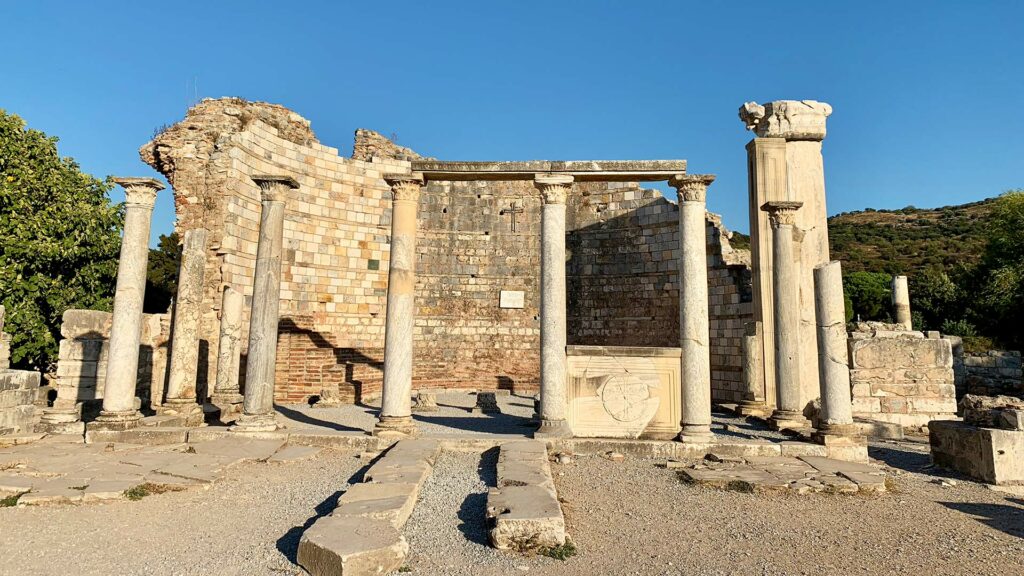
Today, Ephesus is among the most popular sights for visitors in Turkey. But if this should trigger a natural flight reflex in you because you like to avoid large crowds, then I can reassure you. The area is so huge that crowds are very well dispersed. You won’t be able to take photos without people in high season, but there won’t be any crowds.
What awaits you instead is an impressive backdrop of amazingly well-preserved ancient buildings, temples, theatres, fountains, libraries, streets and even ordinary houses and shops. It’s a place where you can become immersed in countless details. Here you get a real sense of what the Ephesians must have once seen as they walked its streets.
How to get to Ephesus
Ephesus is situated some 56 km south of Izmir, near the town of Selçuk. So if you want to visit Ephesus, it makes a perfect day trip.
The most convenient way to get from Izmir to Ephesus is by train to Selçuk. From there, it’s only about 2 km on foot or by minibus, which leaves directly from the station. The train from Izmir to Selçuk departs from Basmane Garı station, which is close to the old town. As of December 2022, one way costs 28 TL and takes about 1.5 hours.
You can find the current departure times and prices here.
Ephesus history
People had settled in the area of the former city of Ephesus as early as 5000 BC. It was probably not until the late 11th century BC that the settlement slowly became a Greek city. It suffered many attacks by other cultures over the years and was partly destroyed by devastating fires and earthquakes. Yet its people remained and rebuilt the city many times over.
In 334 BC, Alexander the Great stood at the gates of the city. By this time, Ephesus was already one of the largest and most important cities in Anatolia. It is also known for one of the seven wonders of the ancient world – the Temple of Artemis. It was completed in 250 BC and is dedicated to the Greek goddess Artemis.
In ancient times, Ephesus had been a port city. This is impressive because today the area lies several kilometres away from the coast. When the metropolis became part of the Roman Empire in 133 BC, it was one of the largest population centres of the empire and had about 200,000 inhabitants. At that time, many buildings were constructed, some of whose ruins can still be admired today. Many of them were financed by wealthy citizens of the city who wanted to create a monument for themselves.
The heyday of the metropolis probably ended with a great earthquake in 262 AD, which destroyed large parts of the city. Even though much was rebuilt afterwards, Ephesus never regained its former status. This was not only due to the great earthquake, but also because the Roman Empire changed greatly during this time. And so Ephesus’ demise was already set when the Julian Plague of 542 killed many of its inhabitants and left large parts of the settlement deserted.
And where did the port of Ephesus go? Well, after the Persians conquered the area in the 7th century, the harbour became increasingly silted up and lost almost all its relevance. The shift in the coastline is therefore the reason why Ephesus is no longer recognisable as a port city today.
Before I give you some more information and recommendations for your visit to Ephesus, I would like to introduce you to a few important places on the site.
1. The Celsus Library
The Celsus Library – or rather, the facade of the Celsus Library – is certainly one of the most amazing sights in Ephesus. The facade was painstakingly reassembled by Austrian archaeologists in the 1970s.
This is also where you can see that a different approach has been taken in Ephesus to make the ancient ruins accessible to visitors. In the whole of Ephesus, you won’t find any places that are closed off. You can walk around all the buildings and discover every inch of them. Just like the Ephesians did in their time.
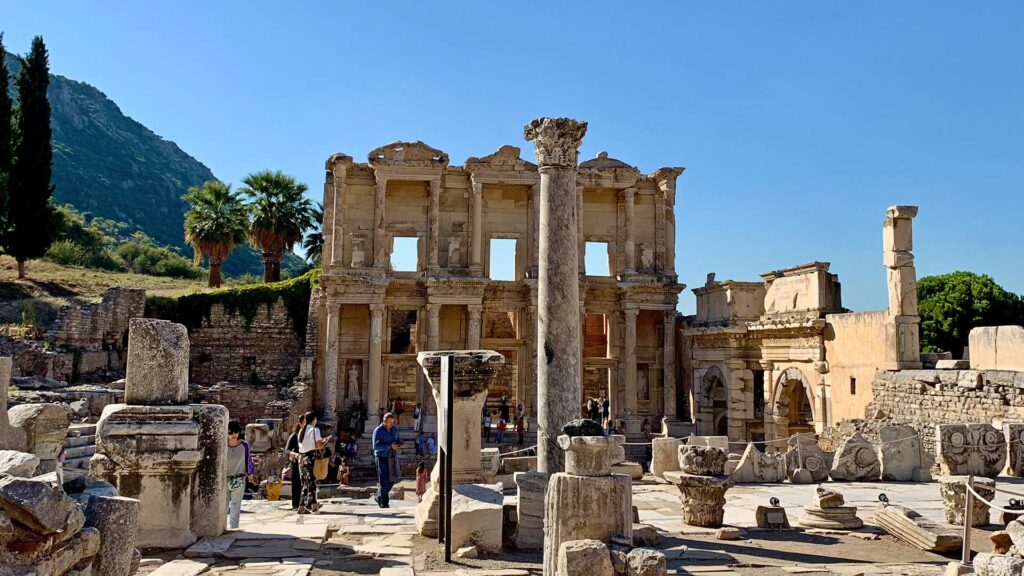
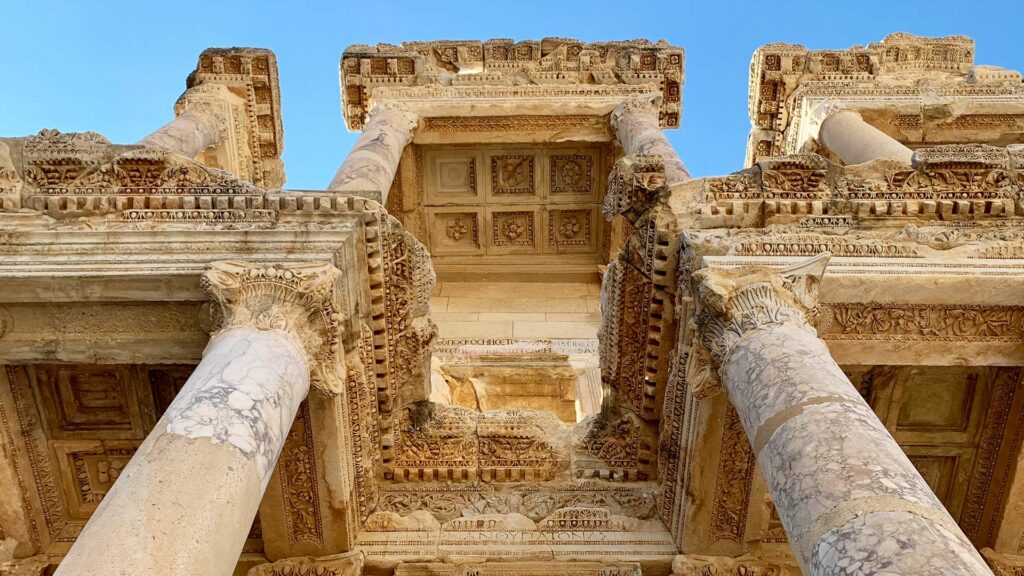
2. Das amphitheatre
Just around the corner from the entrance, you will discover Ephesus’ huge amphitheatre. Once built by the Greeks and then expanded under Roman rule, it could seat as many as 25,000 visitors. Directly opposite the theatre is the harbour road that once connected the city centre with the busy harbour.

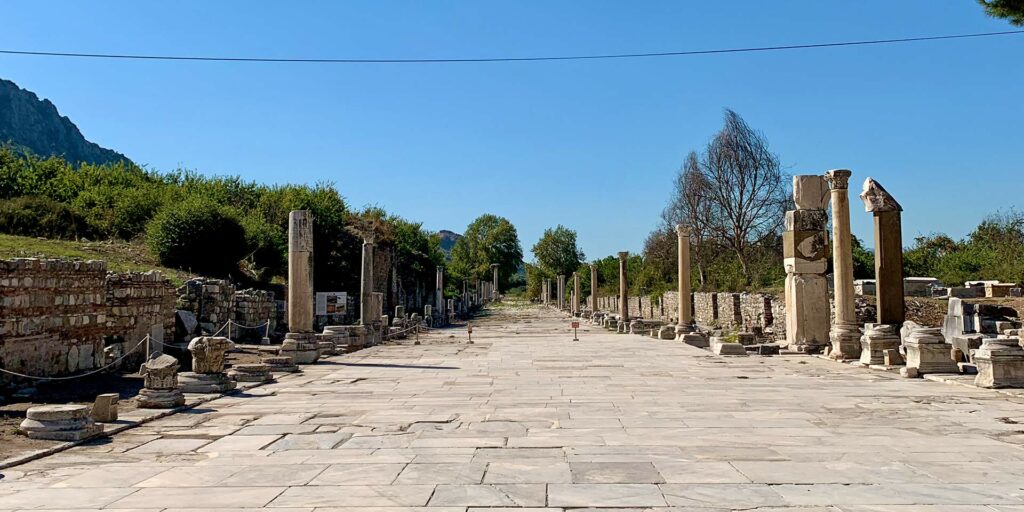
3. The hillside houses of Ephesus
On a slope of the city, there is a separate and covered part of the site. Here you can admire excavations of ancient houses where the wealthy citizens of Ephesus once lived. There is an additional entrance fee, but the visit is worthwhile because you can find an incredible amount of detail about the everyday life of the inhabitants.
The excavations are far from complete, which is why not all areas are accessible. Finally, you get a great overview of the whole site from up here.
4. Curetes Street
Behind the Celsus Library, Curetes Street leads up the hill into another part of the city. Famous and important citizens of the city once lived here and numerous shops lined the street, the foundations of which can still be seen today.
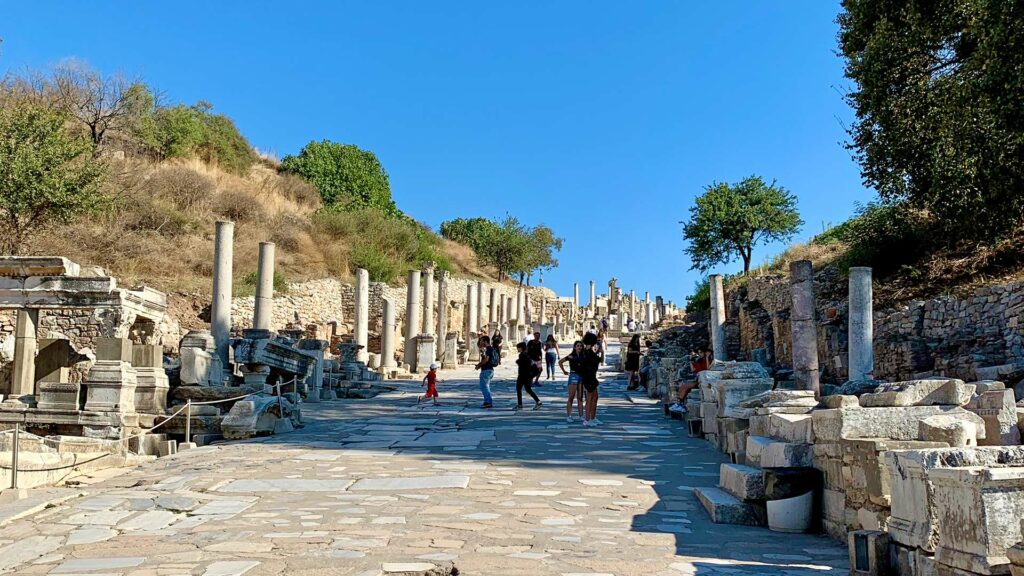
5. The Hadrian’s Temple
Hadrian’s Temple was reassembled from 4th century parts. It was a gift from a citizen to the city of Ephesus and dedicated to the Roman Emperor Hadrian when he visited the city.
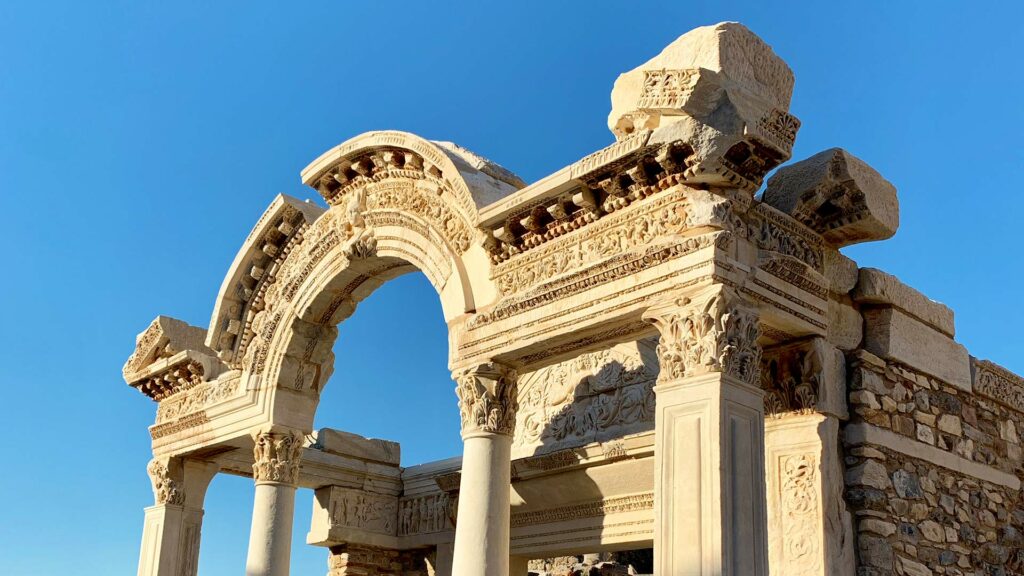
Finally, I would like to give you some information and recommendations for your visit to Ephesus.
The entrance fee is about 10 euros (currently about 196 TL). From April to October, the park is open from 8am to 7pm. The last tickets are sold at 6.30pm. In winter, opening hours are limited to 8am-5pm and the last admission is at 4.30pm.
For your visit in summer, I would definitely recommend avoiding lunchtime. In the late afternoon, the light cast beautiful shadows on the many reliefs, making them stand out even more.
I also strongly recommend that you take adequate sun protection and plenty of water with you. But there are also a few shops in the entrance area that sell drinks.
And if you still feel like buying some genuine fake watches after a long day, you can even do that here.
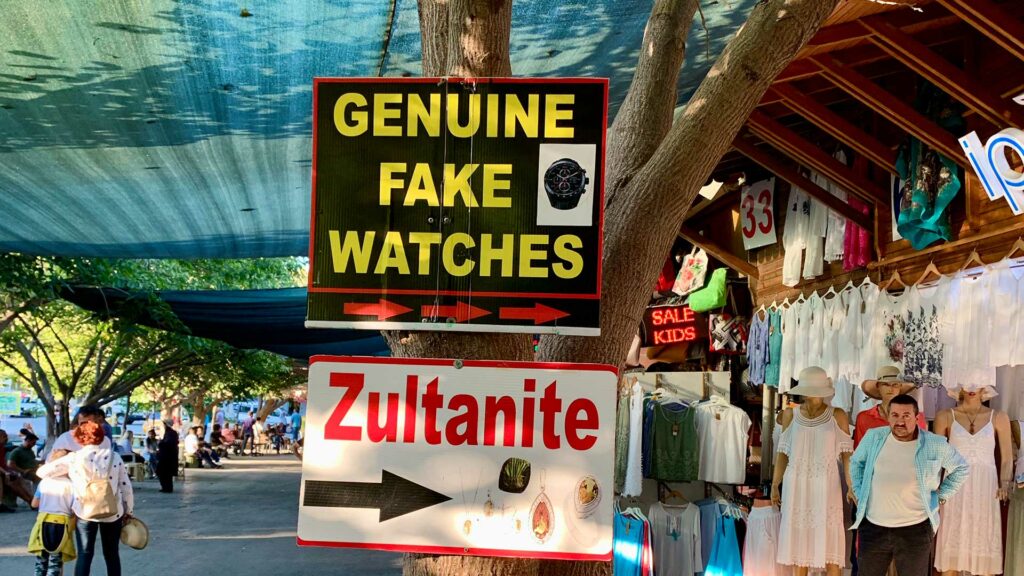
Have you ever been there and do you have more Ephesus tips ready? Leave us a comment.

Gast
Dies ist ein Gastartikel. Falls du Fragen oder Anregungen zum Thema hast, schreibe sie einfach in die Kommentare oder kontaktiere den Gastautor direkt auf seinem Blog.